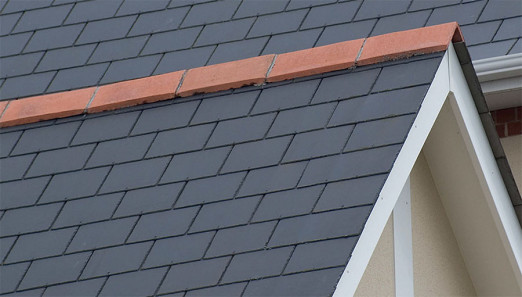Cembrit Moorland fibre cement slates have contributed to a £2.1 million social housing scheme in Liverpool cutting its carbon emissions by two thirds and achieving Code for Sustainable Homes Level 4. The Liverpool Mutual Homes (LMH) development which comprises eighteen new homes rejuvenates one of the city’s main gateways.
The six three-story and twelve two-story homes on Barlow Street in Walton replace vacant maisonette properties which were demolished. Designed by Richard King of John McCall Architects, a mixture of modern and traditional materials have been used on the new buildings to create a contemporary appearance which is in keeping with the surroundings. It was key that the roofing material reflected this.
Fibre cement slates have a similarity to traditional natural slate but are more cost effective. It was for this reason, and the fact that the product is BREEAM A/A+ rated, that Cembrit’s Moorland slate was specified. Moorland is an attractive slate with a dressed edge, which is similar to the appearance of natural slates. Stafford-based contractor, Crosby Roofing was responsible for the installation.
“Cembrit’s Moorland slates are a great high quality roofing material which is cost effective” said Emma Horton, Director of Crosby Roofing Ltd. “On this occasion the client was responsible for specifying the products. However, we are extremely pleased that they chose Cembrit, as the company offers excellent customer service and the slates are easy to install. Knowing that we are working with a product contributes to the environmental aspect of the building is an added benefit.
The Code for Sustainable Homes is the national standard for the sustainable design and construction of new homes and aims to reduce our carbon. It measures the sustainability of a new home against categories of sustainable design, rating the ‘whole home’ as a complete package. Cembrit A/A+ rated fibre cement slates contribute to achieving an environmentally outstanding building.
Moorland fibre cement slates are manufactured using Portland cement together with a non-asbestos formulation of blended synthetic and cellulose fibres. Each slate is pigmented during production and fully compressed. The edges are dressed and then the slates are finished with a high quality, semi-matt acrylic coloured coating to the top face and edges, and a clear binder to the back face.

